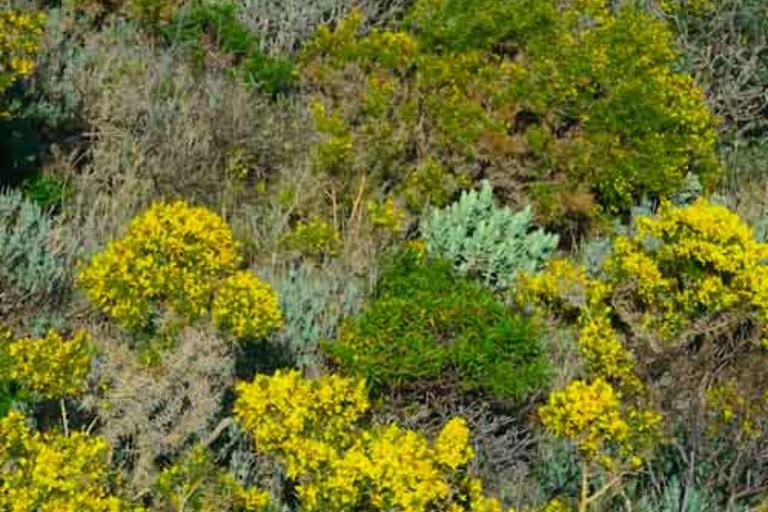
Introduction
The vegetative landscape that you see is the consequence of factors such as the Mediterranean climate of mild winters and long and dry summers; the stony soil; the strong winds of the Tramuntana, dry and cold; the proximity of the sea and sea breezes; and above all the action of man transforming the original vegetative landscape (cutting down forests of cork and holm oaks) to gain pasture and arable fields; finally, the grazing and wild fires of the recent decades have halted the plant succession at the stage that we see it today: low heathland in the form of scrub and calcifugous garrigues, meadowlands and grasslands.
In the shrub we find small-leaved evergreen shrubs, some thorny, often aromatic and with beautiful blooms (a strategy to be able to adapt to these harsh conditions). Here we find the sage-leaved rock rose (white spring flower), grey-leaved cistus (pink flowers in spring), gorse (thorns and yellow flowers in winter) and Spanish lavender (lavender with blue flowers in spring).
The most common birds in these environments are warblers. We hear them easily but they are difficult to spot. The most common and easiest to see is the Sardinian warbler and the rarest the spectacled warbler and the long-tailed warbler.